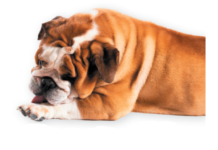Part of the reason it is difficult to pin down which dogs will shed more — and when — is that dogs’ coats are not like those of wild animals after thousands of years of natural evolution, which could conceivably lead to predictable shedding patterns. They have been selected by man through controlled breeding only over the last couple of centuries. Specifically, humans have intensely bred dogs with particular types of coats to suit their aesthetic sensibilities, yielding the few hundred breeds we have today. As a recent report in the journal Science points out, “the tremendous…diversity of modern dog breeds represents the end point of a more-than 15,000-year experiment.”
Interestingly, just three genes account for all the variability in dogs’ hair, ranging from the silky flow of an Irish setter’s coat to the bristly feel of a Siberian husky. The three genes control for whether a dog’s hair is a) short or long; b) wiry or non-wiry; and c) curly or straight. Those three variables allow for all the combinations you find regal, adorable, or perhaps plain weird. Just think Great Pyrenees, English sheepdog, and Chihuahua to call up some of the varied images. Sometimes even within a single breed there are a number of combinations, as smooth-coated, long-haired, and wire-haired dachshunds demonstrate.
All of these differences are the result of gene mutations that have been bred over and over by people. They have not been found to be present in wolves or short-haired dogs like Doberman pinschers, who have “primitive” genes for hair that have not been manipulated by man. “Because most breeds likely originated within the past 200 years,” write the reporters in Science, this demonstrates “how a remarkable diversity…can quickly be generated from simple genetic underpinnings.”




